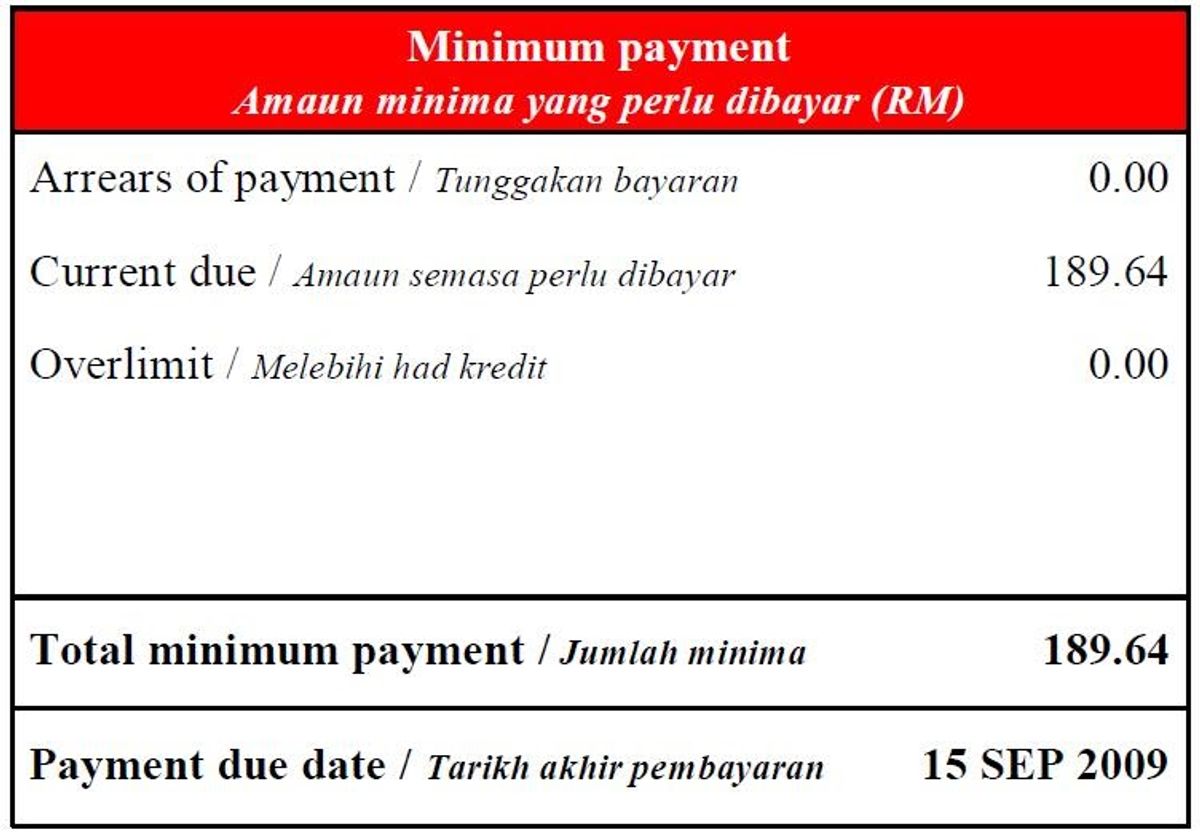Securing overdue payments in the environmental tech trade can be a complex process, involving a structured recovery system, careful evaluation of debt viability, and strategic communication. This article outlines the critical steps and considerations for businesses in this sector to effectively recover debts, from initial recovery actions to the possibility of legal proceedings. Understanding these processes is crucial for companies looking to minimize losses and maintain financial stability.
Key Takeaways
- A structured 3-Phase Recovery System is employed to recover funds, with escalating actions from initial contact attempts to potential legal involvement.
- Debt recovery viability is assessed by investigating the debtor’s assets and the facts of the case, leading to recommendations for case closure or litigation.
- The decision to initiate legal proceedings requires understanding the implications, costs, and potential outcomes, including upfront legal fees ranging from $600 to $700.
- Financial considerations in debt collection include collection rates and fee structures, with rates varying based on claim age, amount, and the number of claims.
- Effective communication strategies involve multiple outreach channels and persistence, with alternatives to litigation available for securing overdue payments.
Understanding the Recovery System in Environmental Tech Trade
Overview of the 3-Phase Recovery System
In the environmental tech trade, securing overdue payments is critical for maintaining cash flow and sustainability. We’ve honed a three-phase recovery system to ensure efficiency and effectiveness in debt collection. Phase One kicks off with immediate action: within 24 hours of account placement, we initiate contact and deploy a suite of investigative tools to understand the debtor’s financial landscape.
In Phase Two, if initial attempts falter, we escalate to our network of attorneys. They bring legal weight to our demands, drafting letters and making calls to press for resolution.
Finally, Phase Three may lead us to the courtroom steps. Here, we must weigh the costs and potential gains, as litigation involves upfront legal fees. Our approach is tailored, with recommendations based on thorough case analysis and debtor asset investigation. We’re transparent about the potential outcomes, whether it’s case closure or the pursuit of litigation.
Our system is designed to adapt to the nuances of each case, always aiming for the most favorable outcome for our clients.
Initial Actions within 24 Hours of Account Placement
Once we place an account, the clock starts ticking. Within the first 24 hours, we spring into action, ensuring no time is wasted. Our three-phase recovery system kicks off with immediate and decisive steps to secure your overdue payments in environmental tech trade.
- The debtor receives the first of four letters, signaling our intent to collect.
- We conduct thorough skip-tracing to uncover the best financial and contact information.
- Our collectors engage with the debtor through calls, emails, texts, and faxes, aiming for a swift resolution.
We’re relentless from the get-go, making daily contact attempts for the first 30 to 60 days. If these efforts don’t yield results, we escalate to Phase Two, involving our network of affiliated attorneys.
Our approach is clear: act fast, be persistent, and use every tool at our disposal. We’re committed to recovering what’s owed to you, providing transparent guidance every step of the way.
Transition to Legal Action and Attorney Involvement
When we reach the crossroads of legal action, we’re faced with a critical decision. Our attorney takes actions in Phase Two, and based on their assessment, we’ll either recommend closing the case or proceeding with litigation. If the latter is chosen, we brace for the upfront legal costs, which typically range from $600 to $700.
We must weigh the potential for recovery against the costs of litigation. It’s a balance of risk and reward, where the scales tip on the facts of the case and the debtor’s assets.
Our rates for collection vary, reflecting the age and amount of the claim, as well as the number of claims submitted. Here’s a quick breakdown:
- For 1-9 claims, rates range from 30% to 50% of the amount collected.
- For 10 or more claims, rates decrease slightly, from 27% to 50%.
Should our attempts to collect via litigation fail, the case will be closed, and you will owe nothing further. This no-payment obligation is our commitment to a partnership grounded in trust and transparency.
Evaluating the Viability of Debt Recovery
Investigating the Debtor’s Assets and Case Facts
We dive deep to uncover the truth. Our investigation is thorough, scrutinizing the debtor’s assets and the surrounding case facts. We’re looking for clear indicators of the debtor’s ability to pay. This is a critical step in determining our next move.
Viability is key. We assess whether the debtor has sufficient assets to satisfy the claim. If assets are lacking or recovery seems unlikely, we lean towards case closure. However, if assets are substantial, we consider litigation.
We’re committed to a no-surprise policy. You’ll be fully informed of the potential for recovery and the associated costs before making any decisions.
Here’s a snapshot of our decision-making process:
- Investigate debtor’s financial status
- Analyze the strength of the case
- Evaluate the cost-effectiveness of further action
Our goal is to ensure that your decision is based on solid evidence and clear financial logic.
Determining the Likelihood of Successful Recovery
When we’re knee-deep in the recovery process, it’s crucial to pause and assess our chances. We must be strategic in deciding whether to close a case or gear up for litigation. Our investigation into the debtor’s assets and the case’s facts is the compass guiding this decision.
If the odds are stacked against us, we’ll recommend case closure. This means no further costs to you. But if there’s a glimmer of hope, litigation might be the next step. Here’s where you weigh the potential gains against the upfront legal costs, which typically range from $600 to $700.
Our rates for debt collection are competitive and vary based on several factors. Here’s a quick breakdown:
| Claims Submitted | Accounts < 1 Year | Accounts > 1 Year | Accounts < $1000 | Attorney Involvement |
|---|---|---|---|---|
| 1-9 | 30% | 40% | 50% | 50% |
| 10+ | 27% | 35% | 40% | 50% |
In the end, it’s about balancing the likelihood of recovery with the financial implications. We’re here to guide you through this critical juncture, ensuring you’re informed every step of the way.
Recommendations for Case Closure or Litigation
After exhaustive investigation, we arrive at a crossroads. If the odds of recovery are slim, we advise case closure—a cost-free resolution for you. Conversely, should litigation seem viable, a decision looms.
Opting out of legal action? Withdraw the claim at no charge, or let us persist with standard collection efforts. Choose litigation, and upfront legal costs await, typically $600-$700. These fees unlock our attorney’s pursuit of all owed monies. Failure to collect post-litigation? You owe us nothing.
Our rates hinge on claim quantity and age:
- For 1-9 claims, expect 30% to 50% rates.
- For 10+ claims, rates drop to 27% to 50%.
We tailor our rates competitively, ensuring your financial burden is minimized while maximizing recovery potential.
Litigation is a gamble—weigh the costs against the potential for reclaiming your dues. Our transparent fee structure ensures you’re informed every step of the way.
Navigating the Decision to Initiate Legal Proceedings
Assessing the Implications of Litigation
When we consider litigation, we’re facing a pivotal decision. We must weigh the potential benefits against the risks and costs involved. It’s a move that can escalate the recovery process, but it’s not without its complexities. We need to be mindful of the financial landscape and the strength of the case before proceeding.
Litigation is not a step to be taken lightly. It involves upfront legal costs, including court costs and filing fees, which typically range from $600 to $700. These are necessary investments to initiate legal proceedings. Should we choose to litigate, we’re committing to a path that may lead to a higher recovery rate but also entails a degree of uncertainty.
Our transparent debt recovery process is designed to safeguard our financial interests while maximizing recovery. We’ll provide tailored recommendations based on a thorough evaluation of the debtor’s assets and the facts of the case.
Here’s a quick breakdown of our fee structure:
-
For 1-9 claims:
- Accounts under 1 year: 30% of the amount collected.
- Accounts over 1 year: 40% of the amount collected.
- Accounts under $1000: 50% of the amount collected.
- Accounts placed with an attorney: 50% of the amount collected.
-
For 10 or more claims:
- Accounts under 1 year: 27% of the amount collected.
- Accounts over 1 year: 35% of the amount collected.
- Accounts under $1000: 40% of the amount collected.
- Accounts placed with an attorney: 50% of the amount collected.
Our approach is to provide a tailored fee structure that aligns with the age and amount of the claim, ensuring that our interests are aligned with your success in debt recovery.
Understanding the Costs and Fees Involved
When we consider taking legal action, we’re faced with a crucial decision: to invest in the pursuit or to cut our losses. We must weigh the upfront legal costs against the potential recovery. These costs can include court fees, filing fees, and other related expenses, typically ranging from $600 to $700. Our approach is a progressive debt collection strategy that balances persistence with professionalism.
We offer flexible payment plans and settlements, with litigation as a last resort. Before proceeding, we conduct a thorough cost analysis to ensure the financial viability of legal action. Here’s a snapshot of our fee structure based on the age and number of claims:
| Claims Count | Under 1 Year | Over 1 Year | Under $1000 | Attorney Involvement |
|---|---|---|---|---|
| 1-9 Claims | 30% | 40% | 50% | 50% |
| 10+ Claims | 27% | 35% | 40% | 50% |
Remember, if litigation does not result in recovery, you owe us nothing. This no-recovery, no-fee model aligns our interests with yours, ensuring we pursue only the cases with a reasonable chance of success.
The Process of Filing a Lawsuit and Potential Outcomes
When we decide to take the legal route, the first step is to cover the upfront costs. Filing fees and court costs typically range from $600 to $700, based on the debtor’s location. Upon settling these fees, our affiliated attorney springs into action, filing a lawsuit to recover all monies owed, including filing costs.
Litigation is a gamble we take together, with clear eyes on potential outcomes. If our legal efforts don’t bear fruit, we close the case, and you owe us nothing further. It’s a partnership where we shoulder the risk with you.
Our fee structure is transparent and competitive, ensuring you’re informed every step of the way.
Here’s a quick glance at our rates:
-
For 1-9 claims:
- Accounts under 1 year: 30% of the amount collected.
- Accounts over 1 year: 40% of the amount collected.
- Accounts under $1000: 50% of the amount collected.
- Accounts with attorney involvement: 50% of the amount collected.
-
For 10 or more claims:
- Accounts under 1 year: 27% of the amount collected.
- Accounts over 1 year: 35% of the amount collected.
- Accounts under $1000: 40% of the amount collected.
- Accounts with attorney involvement: 50% of the amount collected.
Remember, the decision to litigate is yours. We’re here to guide and support, whether you choose to press forward or opt for alternative resolution methods.
Financial Considerations in Debt Collection
Analyzing Collection Rates and Fee Structures
We’ve established a structured fee system for debt collection that’s tailored to the account’s age and value. It’s a sliding scale, where the fresher the debt, the lower the fee. Here’s how it breaks down:
- Accounts under 1 year: 30% of the amount collected.
- Accounts over 1 year: 40% of the amount collected.
- Accounts under $1000: 50% of the amount collected.
When legal action is necessary, local attorneys are crucial for successful debt recovery. We partner with attorneys in the debtor’s jurisdiction to ensure compliance and maximize recovery chances. The upfront legal costs vary, typically ranging from $600 to $700, which includes court costs and filing fees.
Remember, if litigation is recommended and you decide to proceed, these legal costs are necessary investments. However, if the case is closed or if we recommend against litigation, you owe us nothing.
Our fee structure is competitive and incentivizes early action. The longer a debt remains uncollected, the more it costs to recover. This is why we emphasize swift initial actions and decisive steps towards resolution.
Impact of Claim Age and Amount on Collection Costs
Time and money, the twin drivers of debt collection. The older the claim, the steeper the cost. It’s a simple equation: as debts age, they become harder to collect, and the resources needed to secure payment increase. We see a direct correlation between the age of an account and the percentage of the collected amount we retain as fees.
For claims under a year, we’re looking at a 30% fee, but this jumps to 40% for those over a year. And if the amount is under $1000, the fee hits 50%. It’s a sliding scale, designed to balance the effort with the outcome.
Our focus remains steadfast on debt recovery strategies and evaluating the viability of legal action for successful outcomes.
Here’s a snapshot of our tailored collection rates:
| Claims Submitted | Account Age | Collection Rate |
|---|---|---|
| 1-9 | < 1 year | 30% |
| 1-9 | > 1 year | 40% |
| 1-9 | < $1000 | 50% |
| 10+ | < 1 year | 27% |
| 10+ | > 1 year | 35% |
| 10+ | < $1000 | 40% |
Transparency in our process is key. We lay out the costs upfront, so there are no surprises. And when it comes to multiple claims, the rates get even better. We’re here to support your recovery efforts, every step of the way.
Comparing Rates for Individual vs. Multiple Claims
When we tackle debt recovery, we’re always looking for the most cost-effective path. We must consider whether to handle claims individually or in bulk. The rates for individual claims can be higher due to the focused attention and resources required. However, when we process multiple claims together, we can often negotiate lower rates. This is due to the economies of scale and the reduced administrative burden per claim.
Tailored debt collection rates based on account age and size ensure we provide a cost-effective service. For instance, a single claim under a year old might incur a 30% fee, while the same claim, when bundled with others, could see a reduction to 27%. The difference becomes more pronounced with older accounts or smaller amounts.
Swift action is incentivized in our approach, with professional handling to maximize returns and efficiency. We strive to balance the scales, ensuring that our clients don’t just recover what’s owed, but do so in a manner that’s financially sensible.
Here’s a quick breakdown of our fee structure for individual versus multiple claims:
| Number of Claims | Account Age | Fee for Individual Claims | Fee for Multiple Claims |
|---|---|---|---|
| 1-9 | < 1 year | 30% | 27% |
| 1-9 | > 1 year | 40% | 35% |
| 1-9 | < $1000 | 50% | 40% |
| 10+ | Any | 50% | 50% |
Remember, the goal is to secure overdue payments without overburdening our clients with excessive costs. By comparing rates and understanding the nuances of individual versus multiple claims, we can navigate the debt recovery process with precision and care.
Strategies for Effective Communication and Resolution
Utilizing Multiple Channels for Debtor Outreach
We embrace a multi-faceted approach to reach out to debtors. Diversifying our communication channels ensures no stone is left unturned. We deploy emails, phone calls, text messages, and faxes, each serving as a touchpoint to remind debtors of their obligations.
Persistence is key in our outreach strategy. Here’s a snapshot of our initial actions:
- Daily attempts to contact debtors for the first 30 to 60 days.
- Sending a series of letters, starting with the first notice via US Mail within 24 hours of account placement.
- Skip-tracing to uncover the most up-to-date financial and contact information.
We don’t just reach out; we reach out with a purpose. Each communication is a step towards resolution, and we’re relentless in our pursuit.
Our approach is systematic, yet adaptable to the debtor’s response. We’re prepared to escalate to legal action if necessary, but our goal is always to resolve amicably and efficiently.
Frequency and Persistence in Contact Attempts
We know that persistence and adaptability are key to securing overdue payments. Our initial outreach is a multi-channel blitz: mail, calls, emails, and texts. We’re relentless, but smart—constantly evaluating the efficacy of our communication to inform our next move.
- Day 1: Multiple contact attempts across all channels.
- Day 2-30: Daily follow-ups, adjusting tactics based on response.
- Beyond 30 days: Strategic, less frequent contacts to maintain pressure without causing debtor fatigue.
We don’t just hammer away blindly. We adapt our frequency and methods to the debtor’s responsiveness, ensuring our efforts are as effective as possible.
Alternatives to Litigation for Securing Overdue Payments
When we hit a wall with traditional collection efforts, it’s time to get creative. Persistence is key in debt recovery, with a focus on creating urgency. Legal communication, including attorney letters and calls, plays a crucial role in escalating matters for successful debt collection. But before we dive into the legal fray, let’s consider the alternatives.
Mediation can be a cost-effective and less adversarial option. It involves a neutral third party who helps both sides reach a mutually acceptable resolution. Another route is arbitration, where an arbitrator makes a binding decision based on the evidence presented.
We must weigh the pros and cons of each alternative, ensuring we choose the path that maximizes recovery while minimizing costs.
Here’s a quick rundown of our non-litigation tactics:
- Persistent direct communication: calls, emails, faxes
- Escalation through attorney letters
- Mediation sessions
- Arbitration proceedings
Remember, the goal is to secure payment, not to prolong the conflict. By exploring these avenues, we maintain pressure on the debtor while keeping an eye on the bottom line.
Mastering the art of communication is essential for resolving conflicts and achieving successful outcomes. At Debt Collectors International, we specialize in dispute resolution and accounts receivable management, ensuring that your financial interests are protected and your debts are recovered efficiently. Our expert collectors are ready to serve you with over 30 years of experience in the industry. Don’t let unpaid debts disrupt your business—take the first step towards effective resolution by visiting our website and learning more about our tailored services. Act now and ensure your accounts are managed by the best in the business.
Frequently Asked Questions
What happens within 24 hours of placing an account in the recovery system?
Within 24 hours of placing an account, the recovery system initiates Phase One which includes sending the first of four letters to the debtor, skip-tracing and investigating the debtor for financial and contact information, and making daily attempts to contact the debtor through phone calls, emails, text messages, faxes, and more for the first 30 to 60 days.
What actions are taken if initial recovery attempts fail?
If initial attempts to resolve the account fail, the case transitions to Phase Two where it is forwarded to an affiliated attorney within the debtor’s jurisdiction. The attorney drafts demand letters on their law firm letterhead and attempts to contact the debtor via telephone.
What are the possible recommendations after a thorough case investigation?
After investigating the case and the debtor’s assets, two recommendations may be made: 1) Case closure if recovery is unlikely, with no fees owed to the firm or affiliated attorney, or 2) Litigation if there is a possibility of recovery, which requires a decision on whether to proceed with legal action or continue standard collection activity.
What are the upfront costs if I decide to proceed with legal action?
If you decide to proceed with legal action, you will be required to pay upfront legal costs such as court costs and filing fees, which typically range from $600.00 to $700.00, depending on the debtor’s jurisdiction.
How does the age and amount of a claim affect collection rates?
Collection rates vary based on the number of claims and their age. For 1-9 claims, accounts under 1 year are charged 30%, over 1 year 40%, and under $1000.00 or placed with an attorney 50%. For 10 or more claims, the rates are 27% for accounts under 1 year, 35% over 1 year, and 40% under $1000.00, with attorney-placed accounts at 50%.
Are there alternatives to litigation for securing overdue payments?
Yes, alternatives to litigation include continued pursuit of the debt through standard collection activity such as calls, emails, faxes, etc., and possibly negotiating a settlement or payment plan with the debtor.





